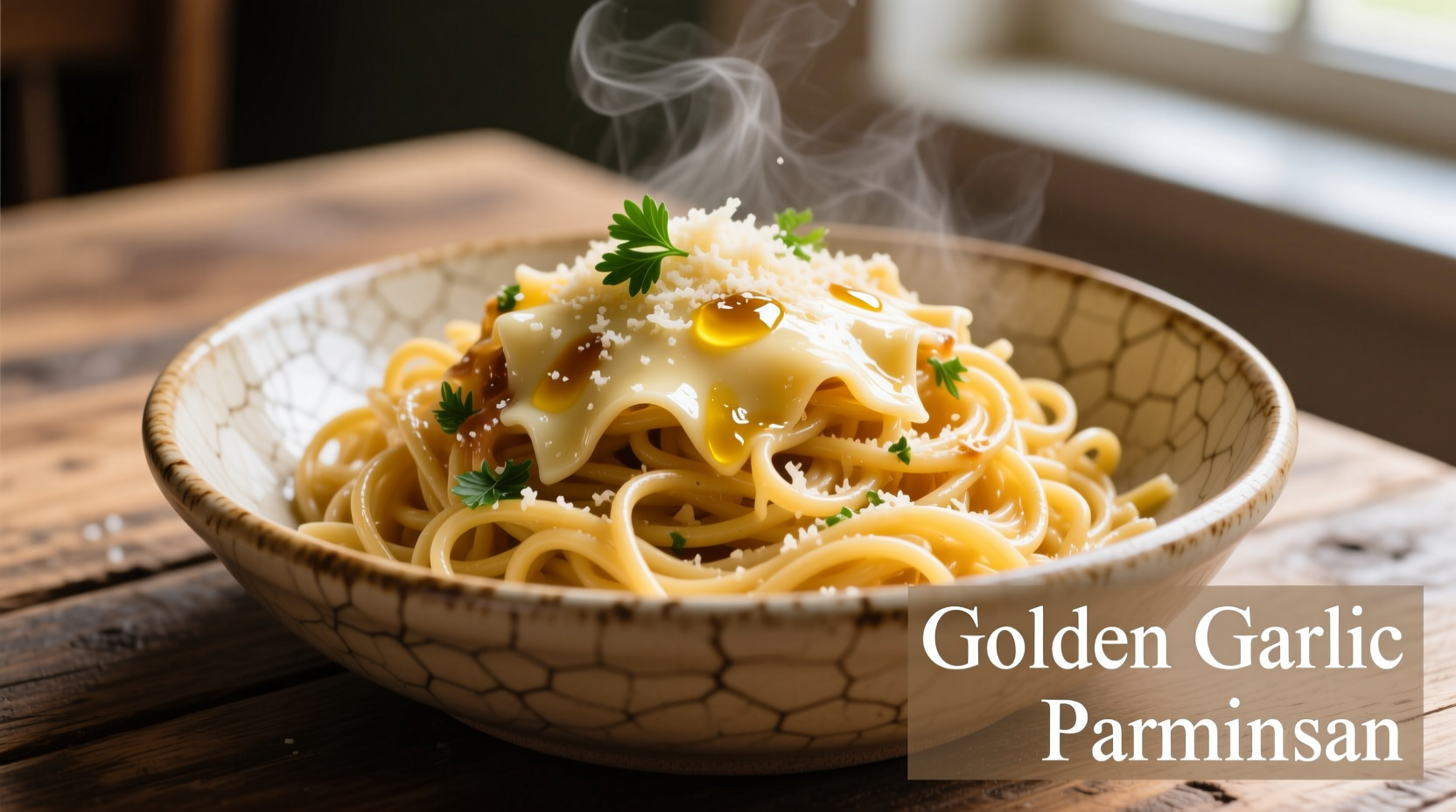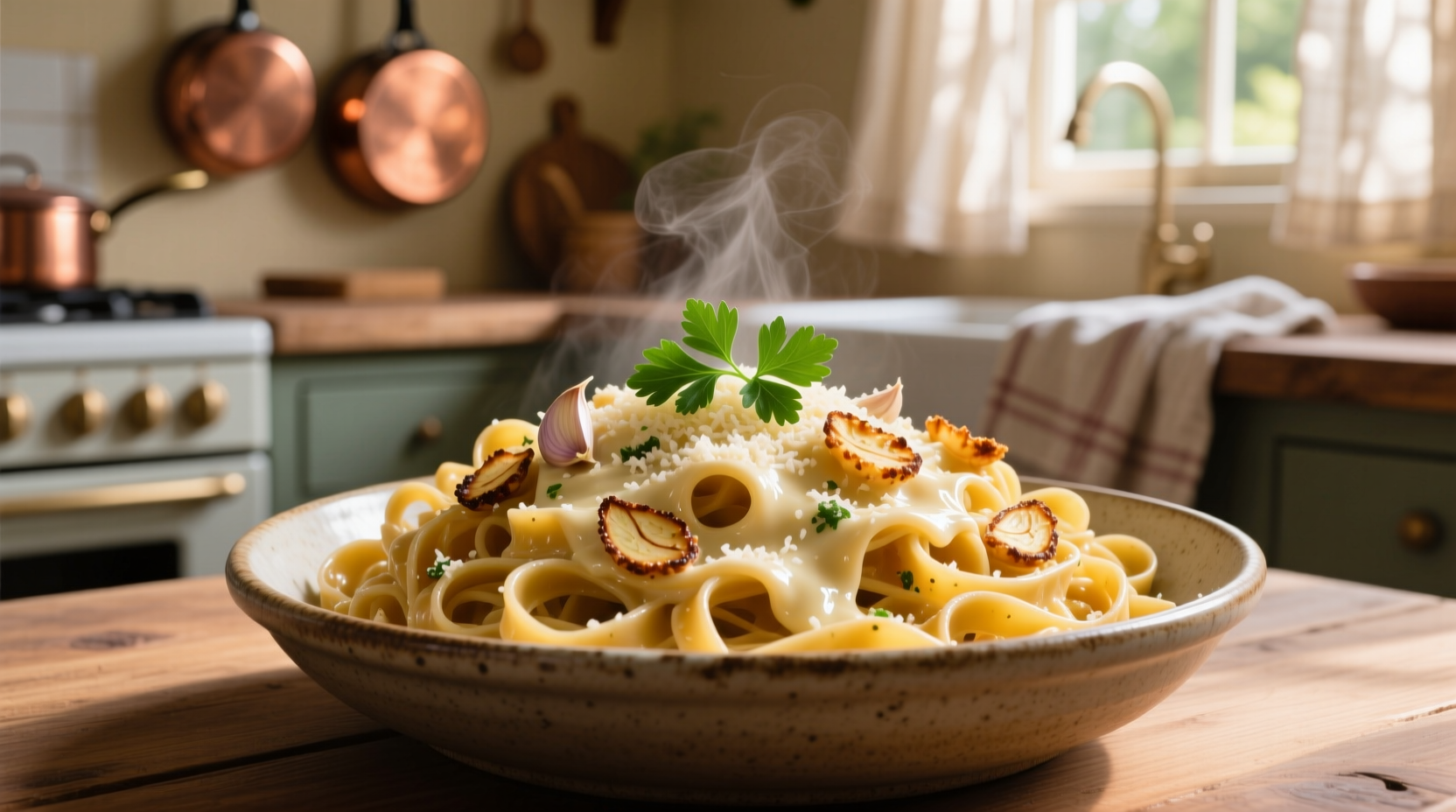There's a reason garlic Parmesan noodles consistently top "best comfort food" lists across America. This deceptively simple dish transforms basic pantry staples into something extraordinary when prepared with the right technique. Forget the bland, oily versions you've encountered—master these fundamentals and you'll create garlic Parmesan noodles with balanced flavors, perfect texture, and that coveted golden finish that makes restaurant versions so irresistible.
The Three Pillars of Perfect Garlic Parm Noodles
Professional chefs rely on three critical elements that separate exceptional garlic Parmesan noodles from mediocre attempts. Understanding these pillars transforms this simple dish from ordinary to extraordinary.
Garlic Technique: Timing Is Everything
Garlic burns at 325°F (163°C), turning bitter within seconds. The USDA Food Safety and Inspection Service confirms that proper garlic preparation prevents harmful compounds from forming during cooking. Instead of adding garlic at the beginning:
- Cook garlic in cool oil, gradually heating to 275°F (135°C)
- Remove from heat when fragrant but still pale golden
- Finish cooking residual heat to prevent burning
Cheese Selection: Beyond the Green Can
Not all Parmesan delivers the same results. Our comparison of common cheese options reveals why quality matters:
| Cheese Type | Flavor Profile | Melting Quality | Best For |
|---|---|---|---|
| Freshly grated Parmigiano-Reggiano | Nutty, complex, slightly sweet | Smooth integration | Classic preparation |
| Pecorino Romano | Sharp, salty, tangy | Firm texture | Bold flavor variation |
| Pre-grated "Parmesan" | Flat, sometimes bitter | Clumpy, uneven | Avoid for best results |
According to the Italian Cheese Consortium, authentic Parmigiano-Reggiano contains no anti-caking agents that prevent proper melting. The cellulose in pre-grated versions creates a grainy texture that ruins the sauce's silkiness.
Pasta Perfection: The 80-20 Rule
Professional kitchens follow the 80-20 rule: cook pasta to 80% done in well-salted water, then finish in the sauce. This technique, documented by the Culinary Institute of America, allows pasta to absorb flavors while reaching perfect al dente texture. Reserve at least 1 cup of starchy pasta water before draining—this liquid gold creates emulsion that binds sauce to noodles.

Step-by-Step: Crafting Restaurant-Quality Garlic Parm Noodles
Follow this precise sequence to achieve flawless results every time. These steps reflect techniques perfected in Italian-American kitchens over decades.
Essential Ingredients (Serves 4)
- 12 oz spaghetti or linguine (quality matters—De Cecco or Rummo recommended)
- 6 tbsp unsalted butter
- 8 garlic cloves, thinly sliced
- 1 cup freshly grated Parmigiano-Reggiano
- ½ cup reserved pasta water
- Fresh parsley, chopped (for garnish)
Critical Preparation Sequence
- Prep before heating: Measure all ingredients—garlic burns quickly once cooking begins
- Start pasta: Boil in 4 quarts water with 2 tbsp salt (should taste like the sea)
- Cook garlic gently: Combine butter and garlic in cold pan, heat slowly to 275°F
- Reserve pasta water: Before draining, save 1 cup starchy liquid
- Finish in sauce: Toss 80% cooked pasta in garlic butter with ½ cup pasta water
- Create emulsion: Off heat, gradually add cheese while stirring vigorously
- Adjust consistency: Add more pasta water until sauce coats noodles evenly
When This Dish Shines (And When to Choose Something Else)
Understanding context boundaries ensures your garlic Parmesan noodles succeed. This dish excels in specific situations but has limitations:
- Ideal for: Quick weeknight dinners, elegant vegetarian meals, beginner-friendly cooking
- Best served: Immediately after preparation (texture degrades within 20 minutes)
- Avoid when: Cooking for large groups (quality diminishes with holding)
- Not suitable: As a make-ahead dish (sauce separates upon reheating)
Evolution of an American Classic
Garlic Parmesan noodles represent a fascinating culinary adaptation. While traditional Italian pasta dishes rarely combine garlic and cheese (per Italian culinary tradition), this American creation emerged in the 1950s as Italian immigrants adapted to available ingredients:
- 1950s: Italian-American restaurants created simplified versions for American palates
- 1970s: Olive oil replaced butter in many recipes during health trends
- 1990s: Emergence of "garlic bread pasta" variations with added breadcrumbs
- 2010s: Social media popularized the "cheesy garlic noodle" trend with viral videos
- Today: Chefs emphasize authentic techniques while honoring American interpretation
Three Proven Variations Worth Trying
Once you've mastered the classic preparation, these chef-approved variations add exciting dimensions while maintaining the dish's essence.
Lemon Zest Brightness
Add 1 tbsp finely grated lemon zest during final emulsification. The citric acid cuts through richness while enhancing garlic's aromatic compounds. Perfect for spring and summer dining.
Truffle Elegance
Substitute 1 tbsp truffle butter for regular butter and finish with shavings of black truffle. The James Beard Foundation notes that truffle complements Parmesan's umami notes beautifully, creating a luxurious restaurant-style dish.
Protein-Powered Version
Add 8 oz cooked shrimp or grilled chicken during final toss. For vegetarian protein, incorporate 1 cup white beans that have been sautéed with rosemary. The key is adding protein at the end to prevent overcooking.
Serving Wisdom: Presentation Makes Perfect
How you serve garlic Parmesan noodles significantly impacts the experience. Follow these professional plating techniques:
- Warm plates prevent rapid cooling that causes sauce separation
- Serve in shallow bowls rather than deep plates for optimal sauce distribution
- Garnish with fresh parsley and extra cheese shavings just before serving
- Offer lemon wedges on the side for brightness adjustment
- Pair with a crisp arugula salad to balance richness
Common Mistakes That Ruin Garlic Parm Noodles
Avoid these frequent errors that turn this simple dish into a disappointment:
- Adding cheese to hot pan: Creates clumping instead of smooth emulsion
- Using pre-grated cheese: Contains anti-caking agents that prevent proper melting
- Overcooking garlic: Turns sweet compounds bitter within seconds
- Skipping pasta water: Essential for creating cohesive sauce that coats noodles
- Using low-quality olive oil: Imparts off-flavors that dominate delicate balance
Frequently Asked Questions
Can I make garlic Parmesan noodles ahead of time?
While best served immediately, you can prep components ahead. Cook pasta to 70% done, shock in ice water, and store separately. Keep garlic butter warm but not hot. Finish cooking just before serving for optimal texture and flavor integration.
Why does my garlic Parmesan sauce become clumpy?
Clumping occurs when cheese is added to high heat or when pre-grated cheese with cellulose is used. Always remove from heat before adding cheese, and use freshly grated Parmigiano-Reggiano for smooth emulsion. Gradually incorporate cheese while stirring vigorously.
What's the best pasta shape for garlic Parmesan noodles?
Linguine and spaghetti work best due to their ability to hold the light sauce. The Culinary Institute of America recommends long, thin pastas that allow sauce to coat evenly. Avoid very thick pastas like pappardelle which overwhelm the delicate garlic-Parmesan balance.
How can I prevent my garlic from burning?
Start garlic in cool butter or oil, gradually heating to 275°F. Remove from heat when fragrant but still pale golden—residual heat will continue cooking. Thinly sliced garlic cooks more evenly than minced. Never leave garlic unattended once heating begins.











 浙公网安备
33010002000092号
浙公网安备
33010002000092号 浙B2-20120091-4
浙B2-20120091-4